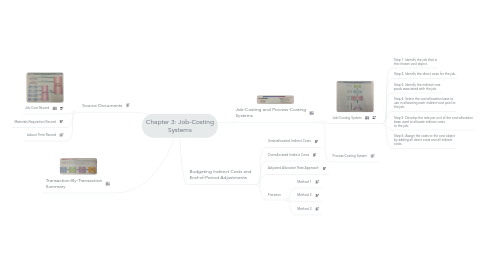Chapter 3: Job-Costing Systems
создатель Maximilian Schillings


1. Source Documents
1.1. Job Cost Record
1.2. Materials Requisition Record
1.3. Labour Time Record
2. Transaction-By-Transaction Summary
3. Job-Costing and Process-Costing Systems
3.1. Job-Costing System
3.1.1. Step 1: Identify the job that is the chosen cost object.
3.1.2. Step 2: Identify the direct costs for the job.
3.1.3. Step 3: Identify the indirect-cost pools associated with the job.
3.1.4. Step 4: Select the cost-allocation base to use in allocating each indirect-cost pool to the job.
3.1.5. Step 5: Develop the rate per unit of the cost-allocation base used to allocate indirect costs to the job.
3.1.6. Step 6: Assign the costs to the cost object by adding all direct costs and all indirect costs.
3.2. Process-Costing System
4. Budgeting Indirect Costs and End-of-Period Adjustments
4.1. Underallocated Indirect Costs
4.2. Overallocated Indirect Costs
4.3. Adjusted Allocation Rate Approach
4.4. Proration
4.4.1. Method 1
4.4.2. Method 2
4.4.3. Method 3
